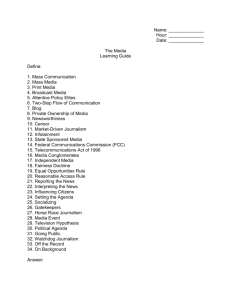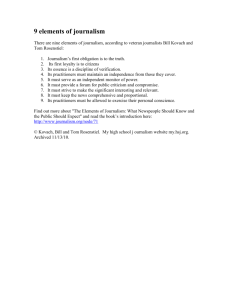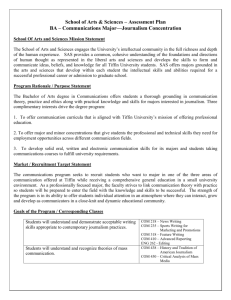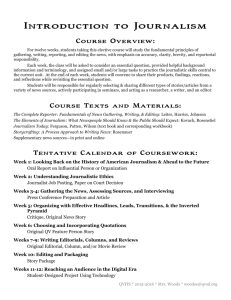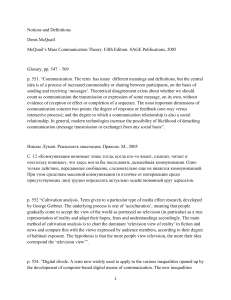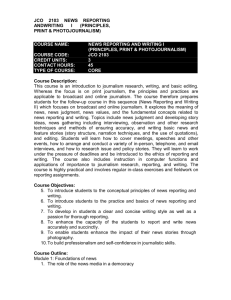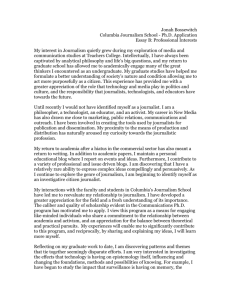JCO 1102 INTRODUCTION TO COMMUNICATION COURSE
advertisement
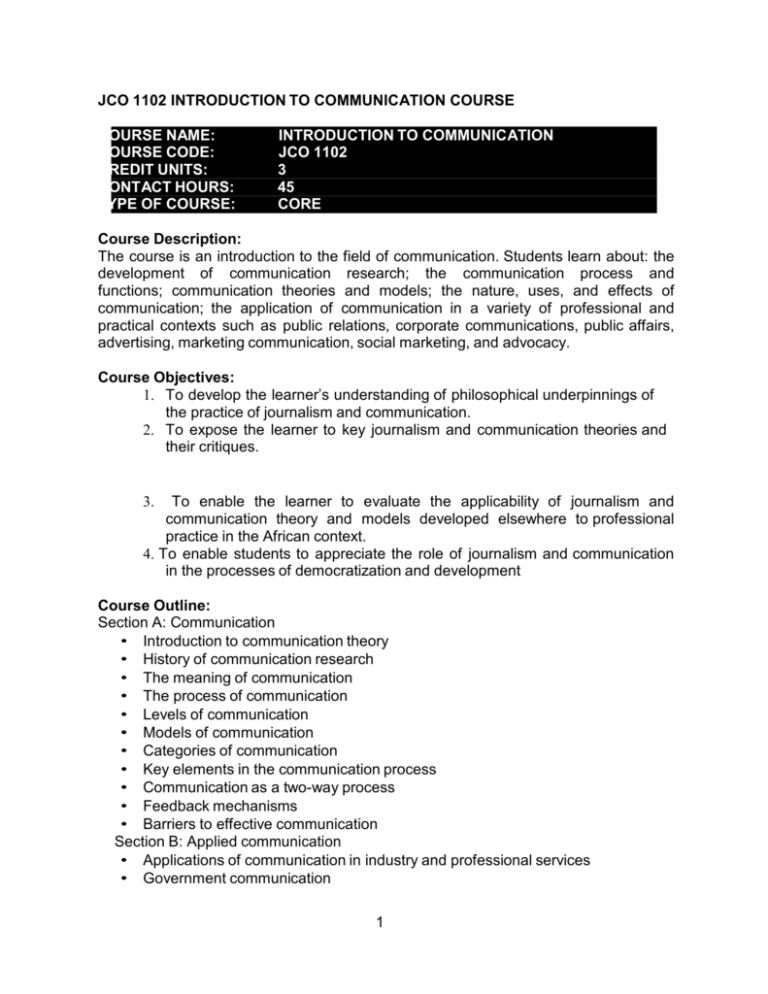
JCO 1102 INTRODUCTION TO COMMUNICATION COURSE COURSE NAME: COURSE CODE: CREDIT UNITS: CONTACT HOURS: TYPE OF COURSE: INTRODUCTION TO COMMUNICATION JCO 1102 3 45 CORE Course Description: The course is an introduction to the field of communication. Students learn about: the development of communication research; the communication process and functions; communication theories and models; the nature, uses, and effects of communication; the application of communication in a variety of professional and practical contexts such as public relations, corporate communications, public affairs, advertising, marketing communication, social marketing, and advocacy. Course Objectives: 1. To develop the learner’s understanding of philosophical underpinnings of the practice of journalism and communication. 2. To expose the learner to key journalism and communication theories and their critiques. To enable the learner to evaluate the applicability of journalism and communication theory and models developed elsewhere to professional practice in the African context. 4. To enable students to appreciate the role of journalism and communication in the processes of democratization and development 3. Course Outline: Section A: Communication • Introduction to communication theory • History of communication research • The meaning of communication • The process of communication • Levels of communication • Models of communication • Categories of communication • Key elements in the communication process • Communication as a two-way process • Feedback mechanisms • Barriers to effective communication Section B: Applied communication • Applications of communication in industry and professional services • Government communication 1 • Public relations • Corporate communication • Public affairs • Advertising • Marketing communication • Social change communication • Political communication • Environmental communication • Health communication • Career opportunities in communication Section C: The future of Mass Communication • Trends in the media/communication industry • Ownership, technology, content, professionalism Learning Outcomes: By the end of the course, the learner should be able to: 1. Explain key concepts in the study and practice of journalism 2. Trace the theoretical and historical origins and contexts of the study of Mass Communication 3. Assess the relevance of a variety of theories and models for local application 4. Distinguish between the practice of Journalism and Communication 5. Discuss the elements of communication and how they relate to media/communication practice and to society; 6. Demonstrate an awareness of aspects of the future of communication based on their understanding of current trends in the field. Methods of Teaching/Delivery: • Interactive lectures • Individual research • Group presentations • Discussions and debates Methods of Assessment: 1. Coursework comprising at least 2 assignments and oral presentation will contribute 40% 2. The final examination will contribute 60% Readings/Reference Materials/Learning Resources: • Crowley, D. & Heyer, P. (Eds.) (2007). Communication in History. 5th Edition. Boston: Allyn and Bacon. 2 • Baran S.J. & Davis D. K. 2003. Mass Communication Theory: Foundations, Ferment and Future (3rd ed.). Belmont:Wadsworth. Dominick R. J., 2002, The Dynamics of Mass Communication. (7th ed.). Boston, MA: McGraw-Hill Inc. 3


